Patch Cable Fiber also known as fiber optic patch cord or fiber optic patch cable, are essential components in any fiber optic network. They are used to connect devices such as routers, switches, and servers to the fiber optic network. A patch cable fiber consists of a length of fiber optic cable with connectors on both ends.
According to different specifications and standards, common fiber optic patch cord can be classified according to the following angles: cable mode, transmission mode, connector type and polished type
Part I. Patch Cable Fiber - Cable mode,Transmission mode,Connector type,Polishing type
Cable mode:Single mode, Multi mode or Armored
single mode:Single-mode fiber optic patch cord is designed for long-distance transmission of optical signals. It uses a single strand of glass fiber with a small core diameter of 9 microns, which allows for high bandwidth and low attenuation over long distances, such as telecommunications, long-haul networking, and data centers.
Multi mode:Multimode fiber optic patch cord uses multiple strands of glass fiber with a larger core diameter of 50 or 62.5 microns, which allows for lower cost and easier installation than single-mode fiber. Multimode patch cable fiber are used in applications that require high-speed data transmission over short distances, such as LANs, data centers, and security systems.There are several types of multi mode fiber, including:OM1, OM2, OM3, OM4, OM5, they are suitable for different types of applications.
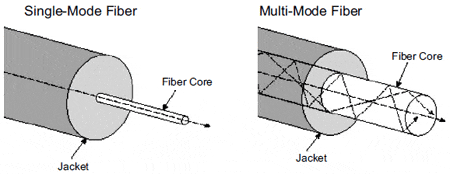
Armored patch cord: Armored patch cable fiber has additional protection around the fiber optic patch cable to make it more durable and resistant to damage. The armor layer can be made of materials such as steel or Kevlar, which provides extra protection against physical damage, crushing, and rodent bites.Armored patch cords are used in harsh environments where the fiber optic cable may be exposed to mechanical stress or environmental hazards, such as in industrial settings or outdoor installations.
Transmission mode: Simplex or Duplex
Based on the transmission mode, there are two types: simplex and duplex.
Simplex fiber optic patch cord has only one fiber and one connector on each end. It is used to transmit data in one direction at a time, such as video streaming or security cameras.
Duplex fiber optic patch cord has two fibers and two connectors on each end. It is used for bidirectional communication, such as in networking applications where data needs to be transmitted and received simultaneously.
The choice between simplex or duplex patch cords depends on the type of application and the networking equipment being used..In most cases,The price of duplex fiber patch cord is higher than that of simplex one.
Connector Type: LC, SC, ST, FC, or Others
When selecting a fiber optic patch cord, it is important to consider connector types. Patch Cable Fiber come in various connector types, including:
(1)LC (Lucent Connector)
LC connectors are small, single-fiber connectors that use a push-pull latching mechanism. They are commonly used in data center and high-density applications.
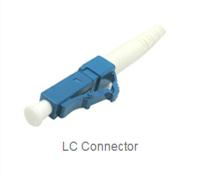
(2)SC (Subscriber Connector)
SC connectors are square-shaped,two-fiber connectors that use a push-pull latching mechanism.
It has a high precision ceramic ferrule structure. SC fiber patch cord is one of the most commonly used in optical fiber networks,because it is simple and low cost.
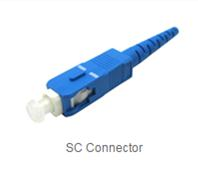
(3)ST (Straight Tip)
ST connectors are round, two-fiber connectors that use a twist-lock mechanism. They are commonly used in telecom and industrial applications.
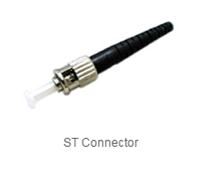
(4)FC (Ferrule Connector)
FC connectors are round, two-fiber connectors that use a screw-on mechanism. They are commonly used in test and measurement applications.It is not as popular as before, because it is replaced by SC and LC connectors.
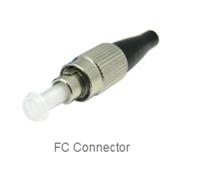
(5)MTRJ (Mechanical Transfer Registered Jack)
MTRJ connectors are two-fiber connectors that use a push-pull latching mechanism.They are commonly used in data center and telecom applications.
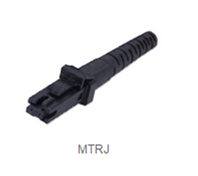
The type of connector used for a fiber optic jumper depends on the network equipment being used and the application requirements.
Polishing Type: PC, APC and UPC
Fiber optic connectors are designed and polished to different shapes to minimize back reflection. According to this connector polish types, there are PC, UPC, and APC fiber optic cable patch.
PC(Physical Contact ) :
PC provides a low insertion loss, which means minimal signal attenuation as light passes through the fiber optic patch cord.It is a cost-effective solution and is commonly used in most single-mode and multi mode applications.
APC(Angled Physical Contact ) :
APC provides the lowest back reflection of all polishing types, but it can be more expensive and less common than PC or UPC polishing, which may be sufficient for many applications.
UPC (Ultra Physical Contact) :
UPC provides even lower insertion loss and reflection and provides greater repeatability compared to PC polishing, making it ideal for high-speed and high-performance applications.
Generally, the connector color of the APC patch cord is green. While connector color of the UPC patch cord is blue.
Part II. Key Trait and Importance of Patch Cable Fiber
Patch Cable Fiber - Key Parameters
How to evaluate the performance of fiber jumpers? There are several key parameters:
(1)Insertion loss
(2)Return loss
(3)Repeatability
(4)Temperature stability
(5)Tensile performance
Patch Cable Fiber - Precautions
Here are some precautions to keep in mind when using patch cable fiber:
(1)Handle with care: fiber optic patch cord are delicate and can be easily damaged. Avoid bending or twisting the cable and do not pull on it forcefully. When disconnecting, grasp the connector and pull it straight out.
(2)Keep clean: Any dust or dirt on the fiber optic patch cord can impair the signal transmission. Use only clean, lint-free cloths or cleaning wipes to clean the connectors, and avoid touching the end faces of the connectors with your hands or any other objects.
(3)Protect from bending and stress: Avoid sharp bends or kinks in the fiber optic patch cable. Use cable ties or other strain relief mechanisms to relieve stress on the cable.
(4)Avoid excessive pulling: Do not use excessive force when installing or removing fiber optic jumpers. This can cause damage to the connectors or the cable.
(5)Use compatible equipment: Ensure that the fiber optic patch cable is compatible with the equipment it is being connected to. Using the wrong type of fiber optic jumper or connecting to incompatible equipment can result in signal loss or other problems.
By following these precautions, you can help ensure the optimal performance and longevity of your fiber optic jumpers.
Why do we need Fiber Optic Patch Cord?
Patch cable fiber products are widely used in: communication room, fiber to the home (FTTH), local area network (LAN), fiber sensor, fiber communication system, fiber connection transmission equipment, national defense and combat readiness, etc.They are also suitable for cable TV network, telecommunication network, computer optical fiber network and optical testing equipment.
Ralated article: What Is the Difference Between Patch Cord and Pigtail? Understand All of Them